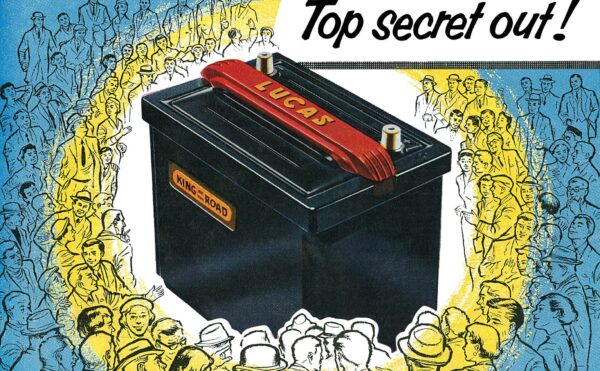Few are interested in ice cream beyond its cool, sweet relief on a hot day. But for those manufacturing ice cream, knowing—or not knowing—the science behind the sweet can make or break a business. Among those in the know is Tom Palchak, manager of Pennsylvania State University’s Berkey Creamery, where 2.2 million ice-cream cones are scooped annually. Every year Palchak shares his knowledge with the class of eager ice-cream enthusiasts attending the Creamery’s Ice Cream Short Course tour in State College.
The food trade is now a multibillion-dollar industry, backed by science that consumers rarely see. Food scientists study edible items molecule by molecule. They are responsible for inventing products like Pringles and Pop Tarts and creating flavors like blue raspberry and bubble gum. For 118 years students have been coming to Penn State for its accessible and practical approach to food science—especially concerning the production of ice cream.
In 1892 Penn State offered its first short course on dairy science to farmers. It has since evolved into a six-day exploration of the science and technology behind ice cream, becoming the oldest ice-cream short course in the country. Every January more than 100 people come from all corners of the world to learn about ice-cream science.
Part of the short course includes a walking tour of the Berkey Creamery, led by Palchak. Inside the ice-cream plant a maze of pipes connects gleaming stainless- steel tanks. Push buttons, colored knobs, pull cords, and levers control the heating, swirling, freezing, and filling operations. Ice cream entrepreneurs and experienced manufacturers alike listen intently to Palchak as he explains the steps of ice-cream production. Questions flow like soft serve on a sultry night.
“How many ounces in each cone?”
“How do you sanitize your equipment?”
“What is the percent overrun in Penn State Ice Cream?”
Häagen-Dazs has sent representatives, as have Ben and Jerry’s, Breyers, and Baskin-Robbins. But this course isn’t just for the big names. For instance this year attendees included a young couple from Pittsburgh who want to add ice-cream service to their miniature golf course. The casual nature of the crowd, wearing jeans and sweatshirts, boots and sneakers, doesn’t keep out the technical science of ice cream. Palchak explains how a pressure differential keeps raw milk from mixing with pasteurized and how a homogenizer breaks milk-fat globules down to a minuscule 2 microns. Under pressure, he adds, liquid ammonia boils at –40°F, making it an efficient cooling agent for ice cream. Like vanilla and fudge, theory and practice swirl inside Penn State’s ice-cream plant.
In the short-course classroom, students have a wide selection. Courses include Milk Composition, Sugars and Sweeteners, Ice Cream Hardening, and even Microbiology and Ice Cream Physics. In the Sensory Evaluation class teacher Jon Hopkinson takes a new approach to self-reliance. “Our tongues are our first defense,” he says as he teaches students to taste-test ice cream for fat, sugar, and air content.
Ice cream travels from cow to cone in three days on Penn State’s campus. Students in the short course visit the cows and benefit from learning marketing techniques honed in the retail store. By the end of six days they understand flavoring, refrigeration, and freezing. For ice-cream enthusiasts who can’t spend six days in State College, the university offers “Ice Cream 101”—a two-day course designed to teach small-scale manufacturing. In the words of Bob Roberts, director of the short course, “It’s science camp for grownups.”
While some of the industry professionals who attend have science backgrounds, many students do not. Abstract concepts like freezing-point depression have direct applications in processing ice cream, and understanding such details is important for those who want to dip into this huge American market.
Food science, including that of ice cream, is becoming increasingly popular. Anecdotal evidence suggests that the growing audience for science-related food shows, such as “Good Eats” and “Food Detectives,” has led to increased enrollment in food-science programs. For many foodies learning kitchen-based chemistry is just plain cool. But there may be another reason, too. Put simply by one food-science professor, “If we don’t work, you don’t eat.”




